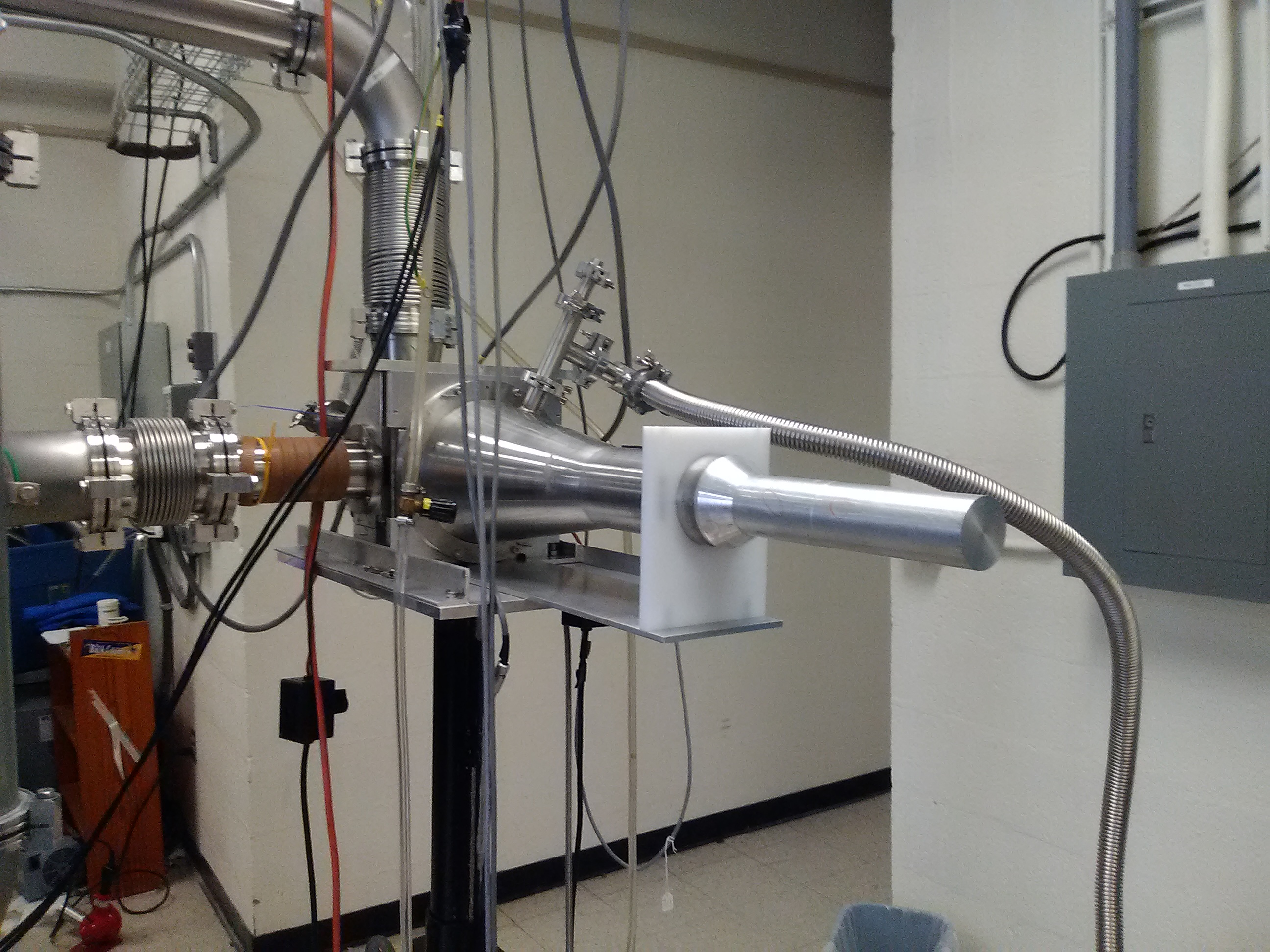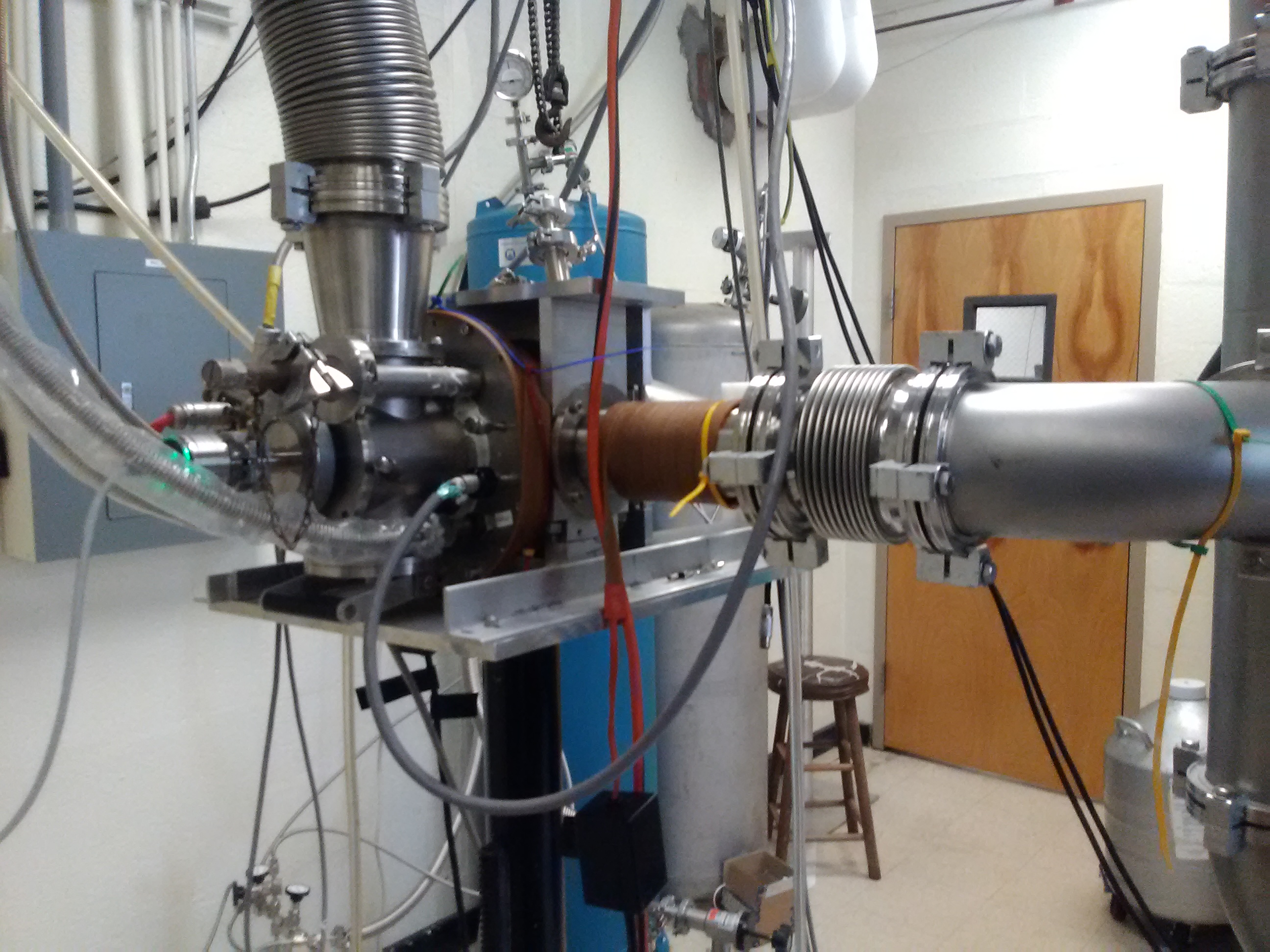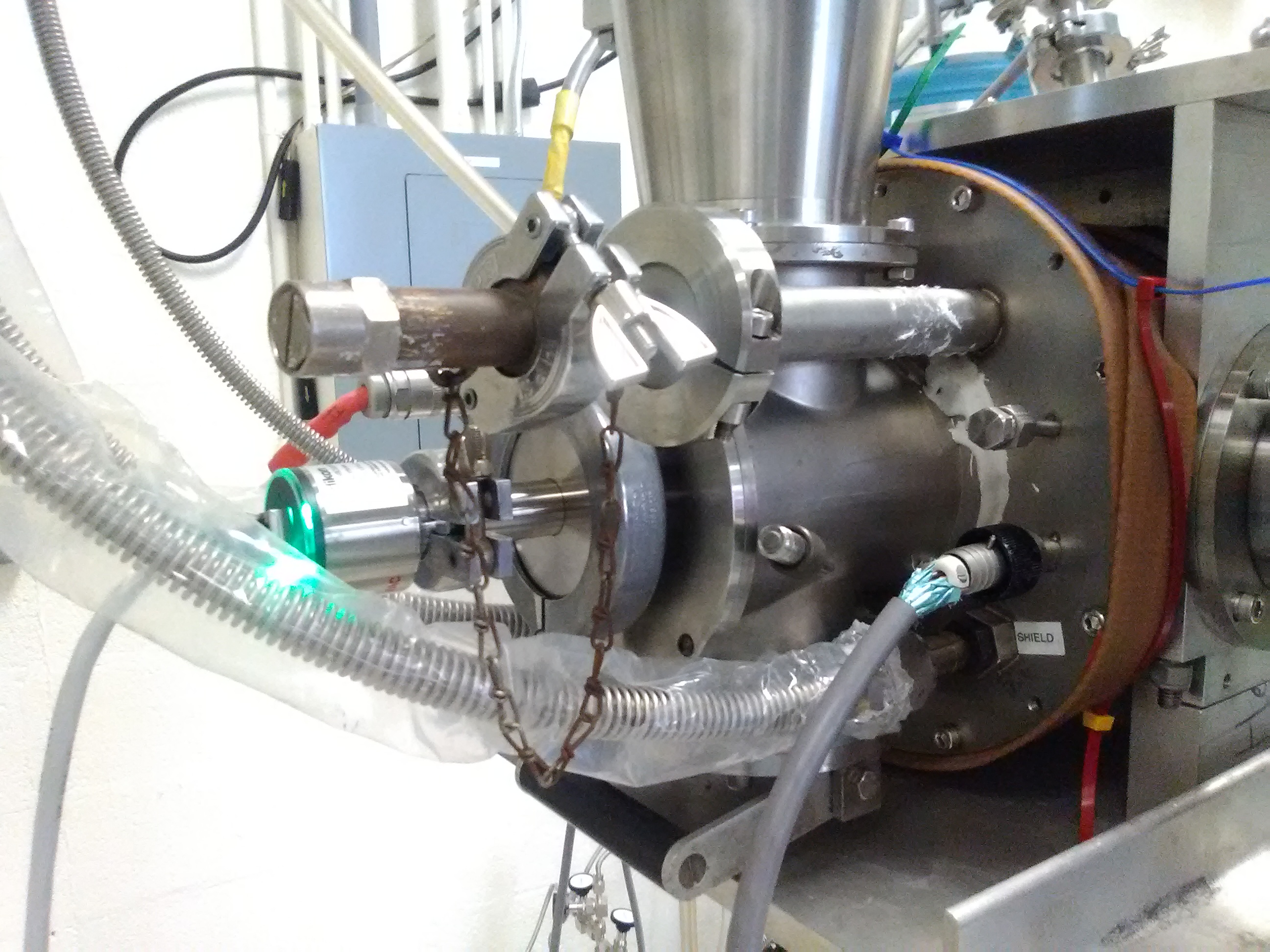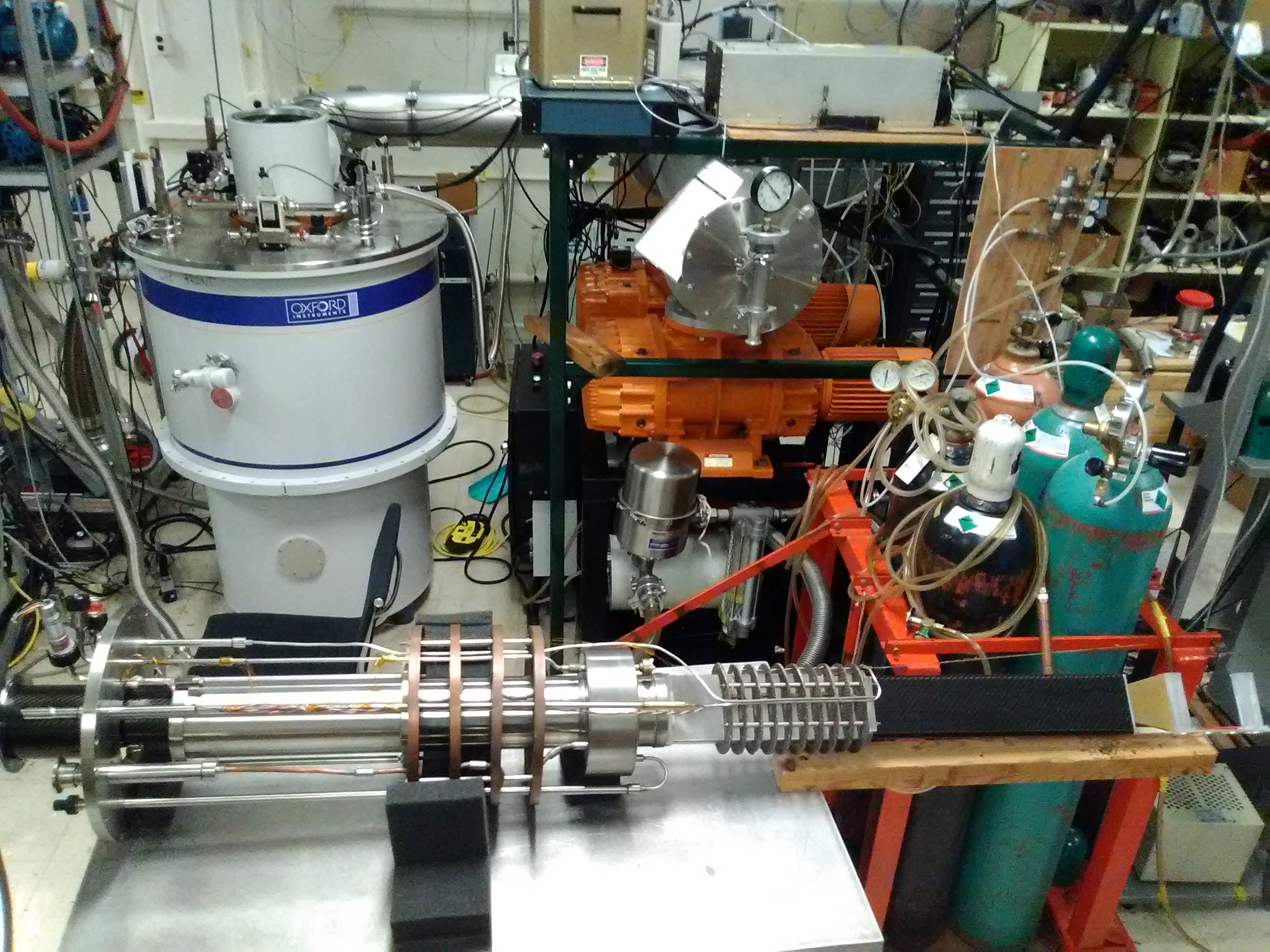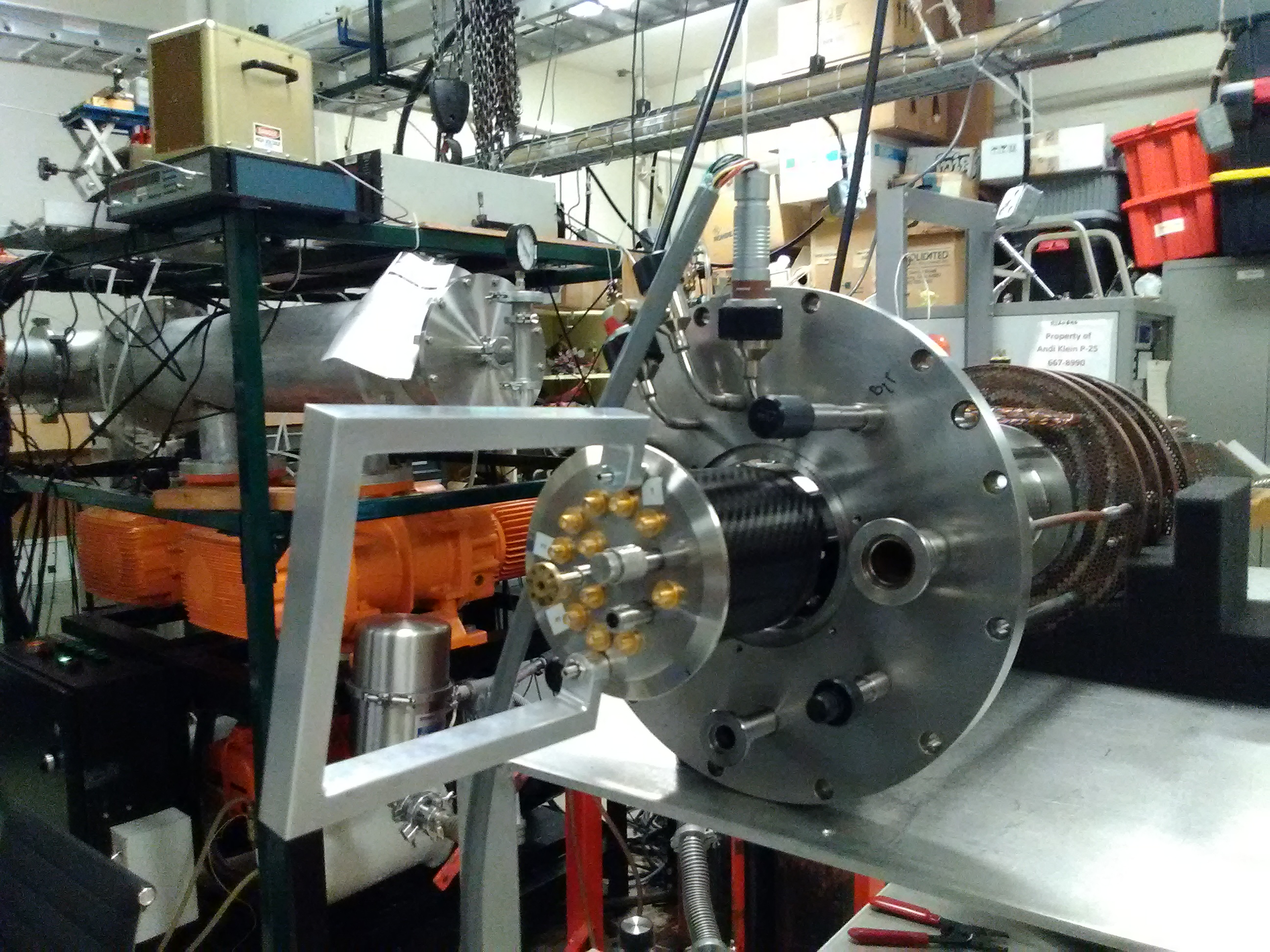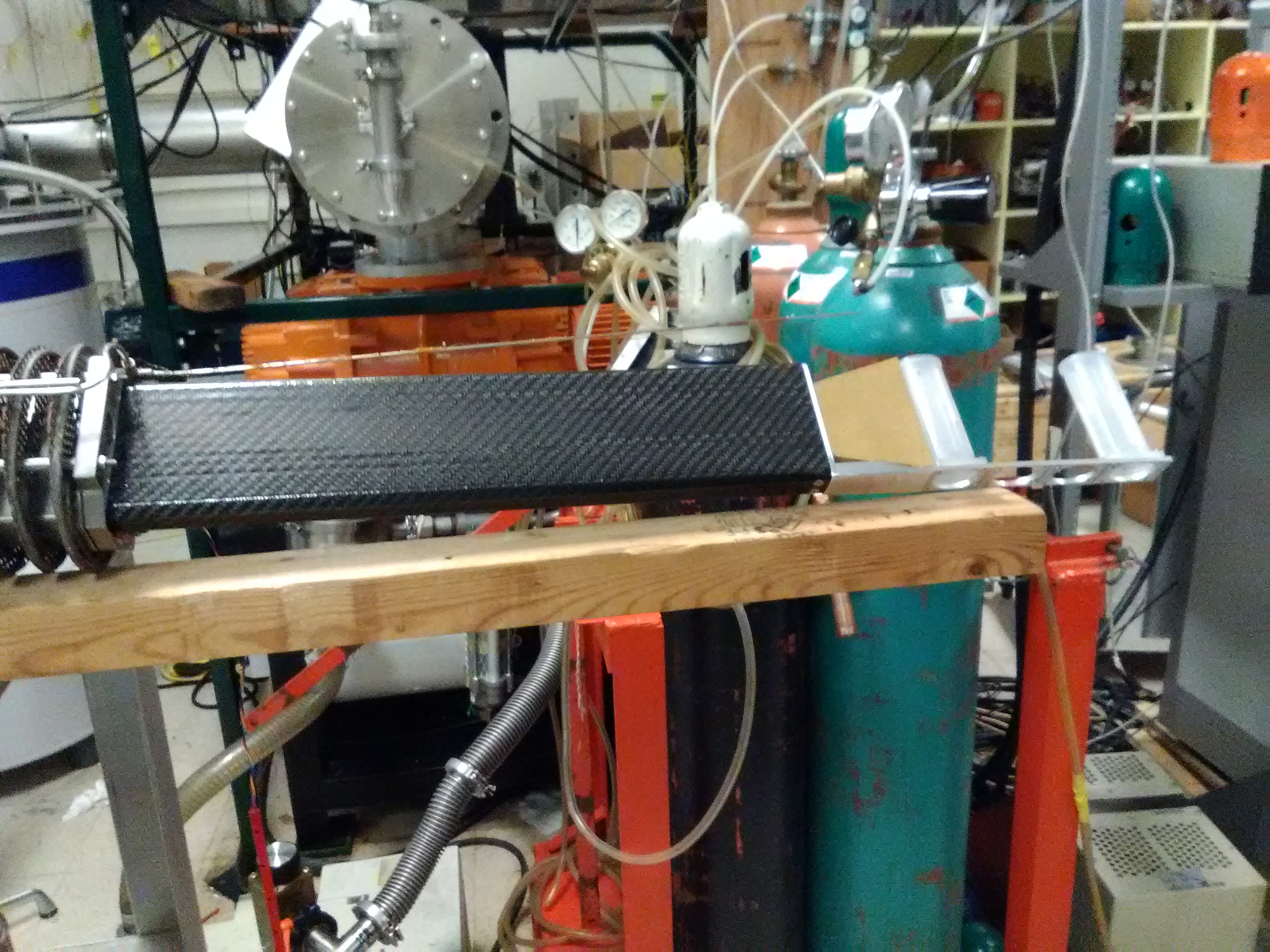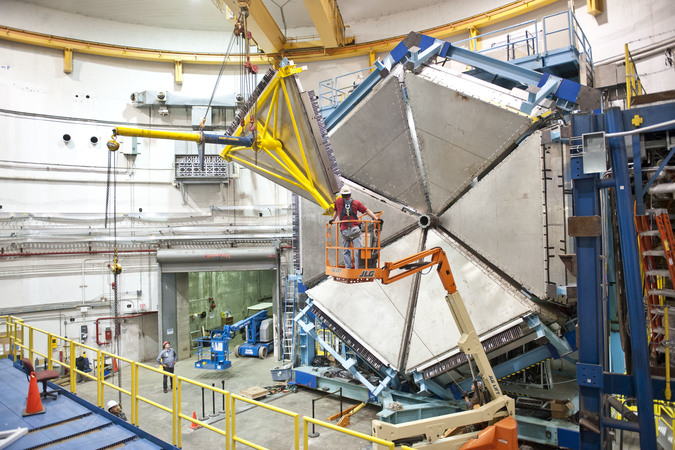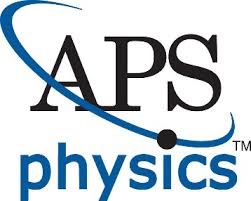Our research program is at the forefront of the studies of the fundamental properties of the nucleons, i.e. the proton and neutron, which are the two building blocks of the atomic nucleus. The interactions of quarks and gluons, the underlying constituents of strongly interacting matter, are well described by the basic theory, Quantum Chromodynamics (QCD). However, the way in which quarks and gluons are confined within the nucleons and the mesons (responsible for nuclear forces), is poorly understood in QCD.
We concentrate on experiments that use spin degrees of freedom (i.e. using polarized targets and beams) in electron-nucleon/nucleus interactions to extract new information about the properties of these fundamental building blocks of nature and lend new insights into these basic and longstanding problems. We are unique among university based research groups as we have the capabilities of developing, building and maintaining the cryogenic polarized targets critical for this research which is carried out at the Jefferson Lab whose unique capabilities make this research possible.
Our other notable area of focus is the study of quasi-elastic scattering, scaling and short range correlations (SRC) in nuclei. The history of the effort can be traced to SLAC in the late 70's and 80's and at Jefferson lab with a series of 3 experiments, and a fourth approved for 12 GeV. It has been known for a long time that the picture of lumbering nucleons in a mean field is incomplete. The strong repulsive feature of the nucleon-nucleon (NN) interaction at short distances prevents nucleons from coming close together and generates highly energetic nucleons. This short distance behavior is already being shown to be very fertile ground to seek an understanding of the EMC effect and medium modifications.

